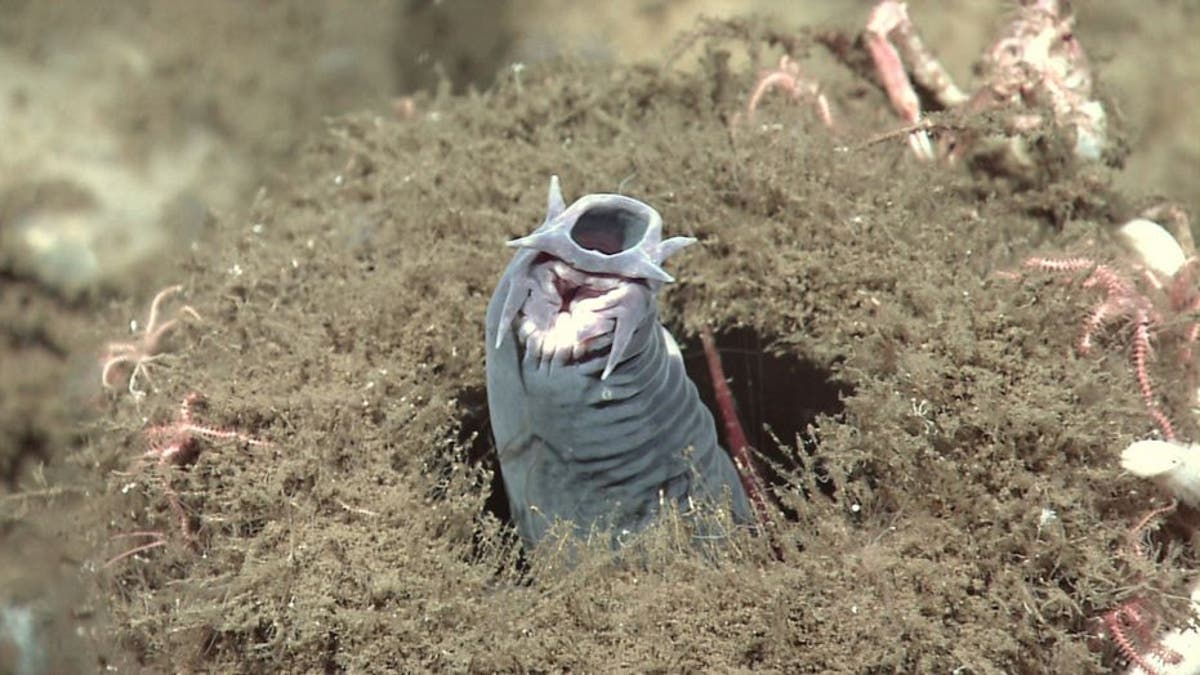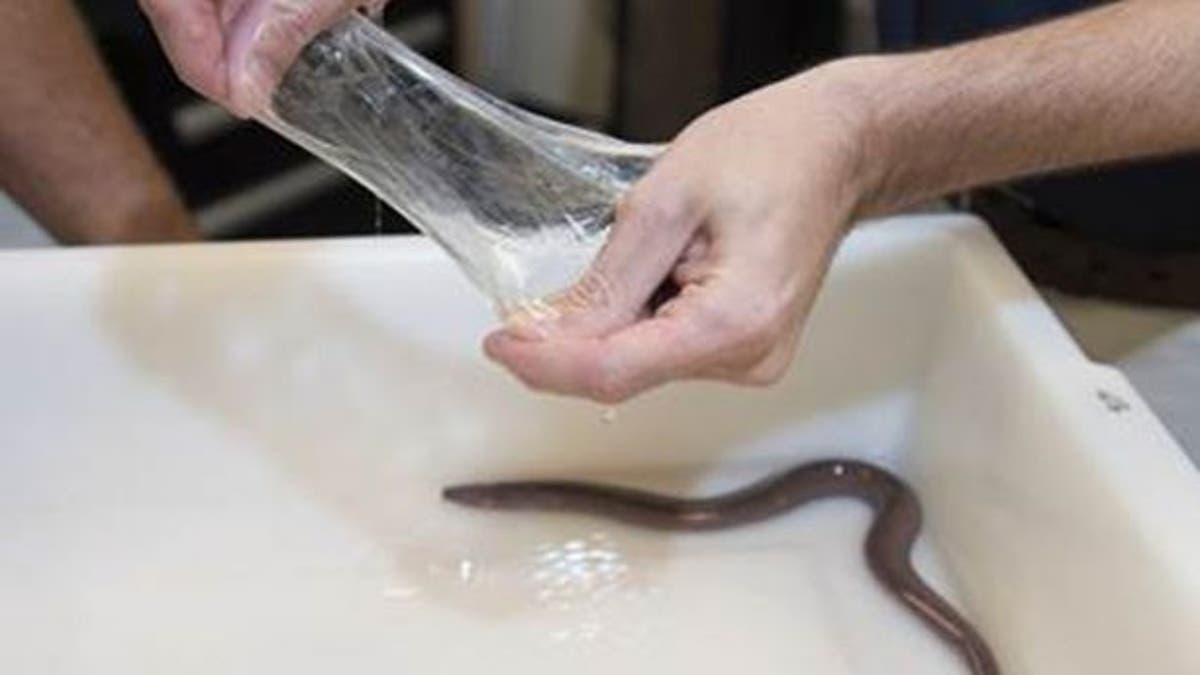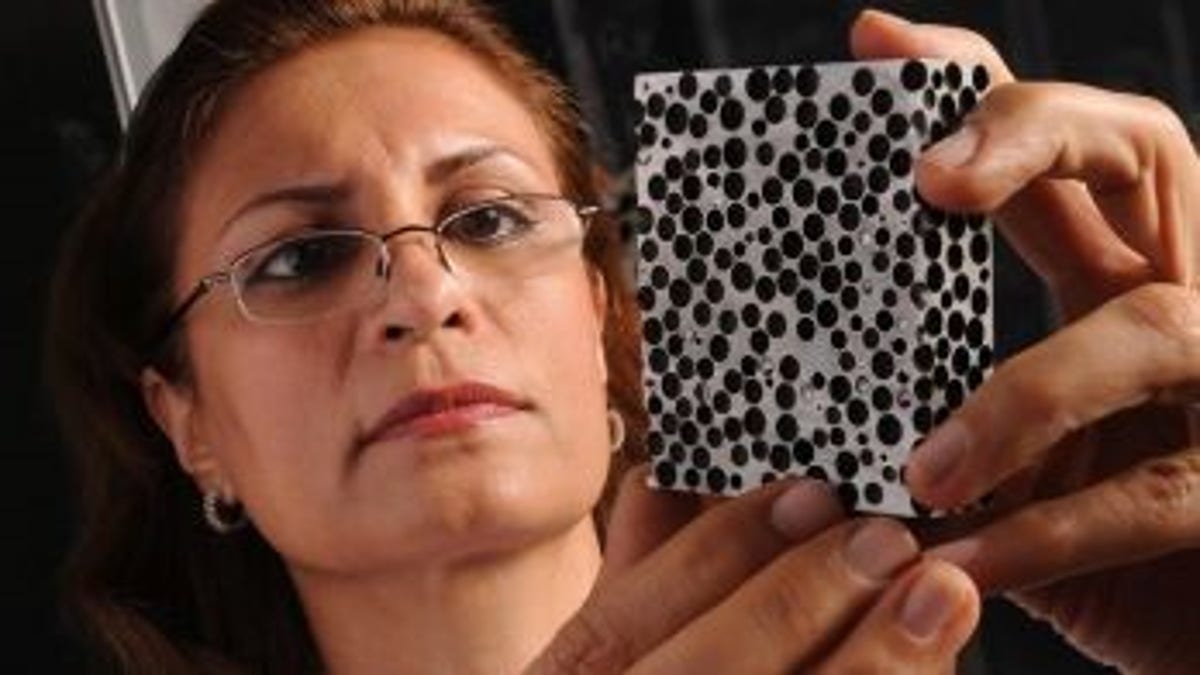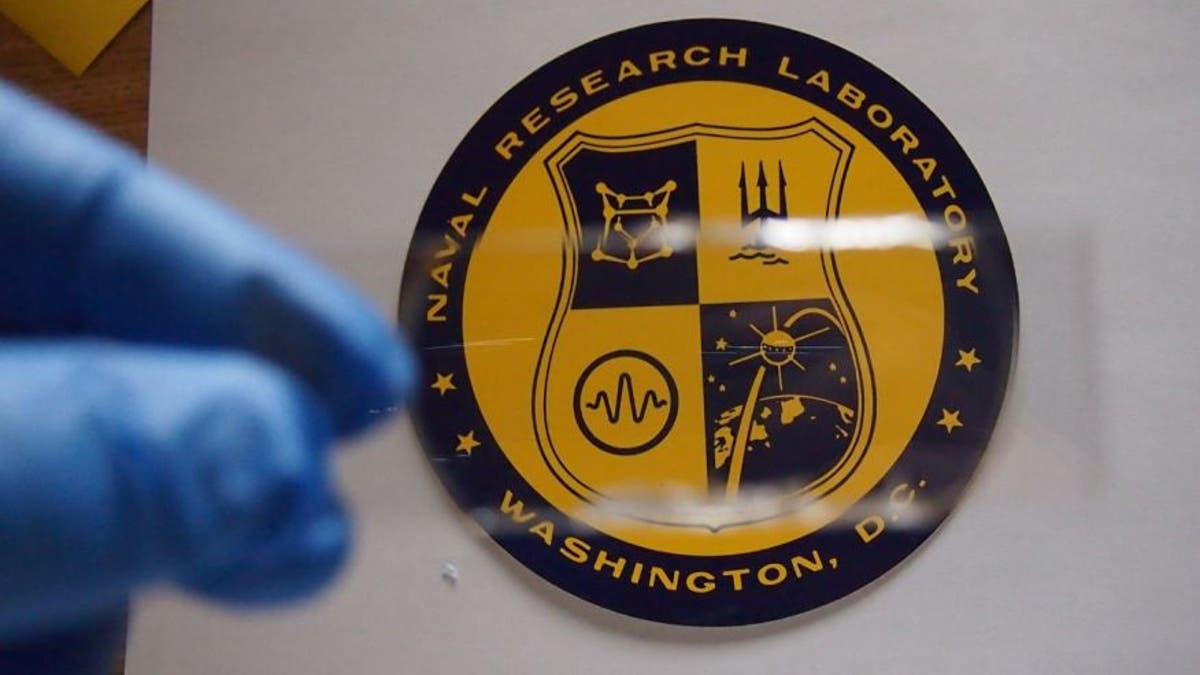
A hagfish protruding from a sponge. (Credit: NOAA Okeanos Explorer Program)
Slime, foam, glass — not the typical ways to stopping bullets cold, yet all three at the base of the most outstanding body armor breakthroughs of the year.
In 2017, the U.S. military pioneered the use of an ages-old creature’s slime as body armor, created ultra-light, glass-like material that could be used as invisible bulletproof vests, and succesfully tested bullet-pulverizing armor made out of foam.
Here are these three wild, out of the box, new types of armor that aim to provide better protection to law enforcement officers and troops across the globe.
Slime body armor from 330-million-year-old creature
Slime from hagfish, a 330-million-year-old creature, could be the key to next-level bulletproof vests.

(Credit: US Navy, Naval Surface Warfare Center Panama City Division)
The monstrous-looking, spineless hagfish lives in the deepest depths of the ocean and scavenges the ocean floor for food, feasting on dying animals from the inside out.
Made of mucus and threadlike fibers, the clear slime’s fibers are ultra-strong and flexible. Just how strong is the hagfish slime for self-defense? The slime is so powerful that it has been the key to survive extinction after extinction — even outlasting the dinosaurs.
PODCAST: HEAR A SEAL TEAM 6 MEMBER DESCRIBE SHOOTING OUT OF TORPEDO TUBES FOR MISSIONS
Although it may look like a snake, the hagfish does not have scales. Instead, to defend itself it unleashes slime and sometimes even kills its adversary through slime suffocation. Even a shark attempting to eat a hagfish will find it hard to succeed and risk death by slime.
The slime rapidly expands when combined with seawater, creating huge volumes of it. One mere foot-long hagfish can possess hundreds of miles of slime thread inside: it can expand 10,000 times in volume in milliseconds.
Experts at the Naval Surface Warfare Center Panama City Division, in Florida, are studying the hagfish slime to use it for military applications. They believe it could be used to build bulletproof armor that is stronger and lighter than the ones currently available — even armor like Kevlar.
Scientists are also unlocking potential beyond body armor from this unique fish, like bottling the slime into a spray for Navy divers to use against sharks.
Natural hagfish reproduction remains a mystery and breeding in captivity has not been successful. So how could the Navy get the volumes of slime necessary to build armor? Why would the Navy want to apply it to their ships? Where will the slime be used for civilians?
Read the full story to get all these answers and more:
Slime of 300-million-year-old creature may be used for body armor
Foam that pulverizes armor-piercing bullets
Even armor-piercing bullets cannot get through this foam. And it doesn’t just stop bullets — it destroys them, decimates rounds into dust.
This special type of foam, called composite metal foams, or CMF, is being developed at North Carolina State University. In tests, the team shot at the foam body armor with 7.62 x 63 mm M2 armor-piercing bullets and, on impact, the foam smashed them into powder.

On the side of the foam armor that faces the war fighter’s body, the bullet was only able to cause an 8 mm indentation on the back.
The military and law enforcement could use this kind of foam for advanced, ultra-light body armor to protect personnel even from these incredibly dangerous, life-threatening rounds.
The NCSU team is also working on a foam with potential to keep military and first responders safe from radiation and extreme heat.
How is it made? How could it be vital for explosives? How could the foam be used in space?
Read the full story for all the details here:
This foam stops bullets cold and pulverizes them to dust
Invisible armor repaired with an iron
U.S. Naval Research Laboratory scientists have created a remarkable transparent armor that is lightweight and still provides excellent protection.
Nearly as transparent as glass, the armor is essentially invisible protection from bullets. And if the futuristic body armor sustains some hits, they can be ironed back into shape thanks to its special material. War fighters could fix it on the fly with something as simple as a hot plate and the armor will meld itself back together.
PODCAST: TRIGGER TIME WITH A SPECIAL FORCES MASTER INSTRUCTOR
Think about how “bulletproof glass” works: you can see through it and it stops bullets.

The NRL-developed transparent polymer armor consists of alternating layers of elastomeric polymer and a harder material substrate. Very small crystalline domains, which also provide rigidity, give the polymer its transparency. (U.S. Naval Research Laboratory)
Now what if you could do that for body armor and helmets? That’s the idea here.
During tests, the armor also helped reduce the impact of blast waves caused by something like an IED explosion, which could potentially help prevent brain trauma.
Where in war zones could it provide key advantages for Special Operations?
How can it be used to protect against terror attacks? Which popular tourist spots are having these invisible armor walls installed?
Find out all the details in the full story here:
Here's how 'invisible armor' could defeat bullets and blades
